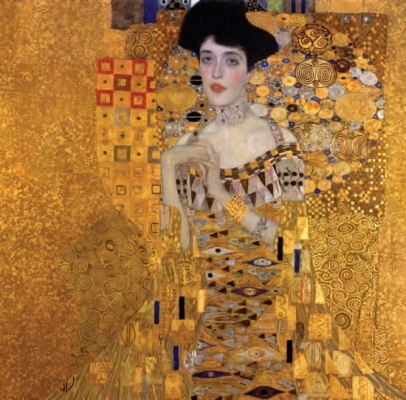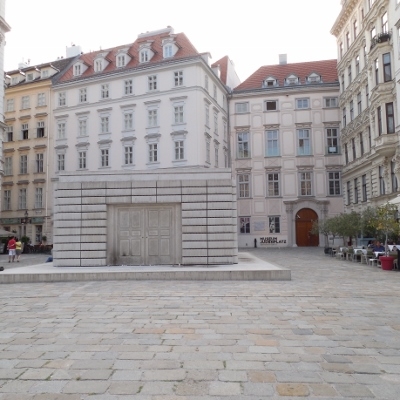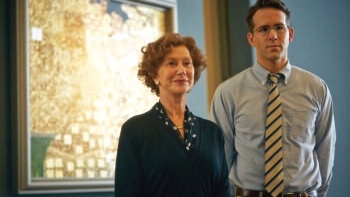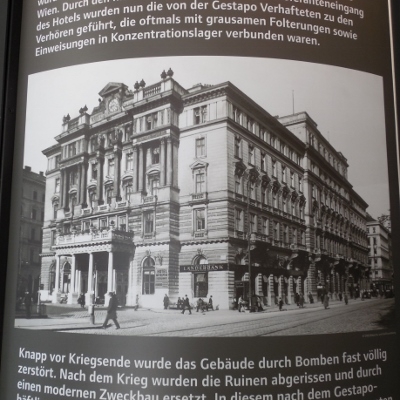Return to the City of a ‘Woman in Gold’
In July 2014, I returned to Vienna after a long pause, to reacquaint myself with the city where my father was born in 1932; the city he had had to flee on a Kindertransport in 1939, and the city he had returned to in 1978 as the Immigration Attaché at the US Consulate. I went to high school in Vienna, attended my first opera at the famed Staatsoper, and accumulated many happy memories. Yet, at the same time, the pleasure in this cultured city of cafes was always diminished by remembering that my grandmother had had to scrub the cobblestones on her hands and knees, my father was torn from his family and the rest of the family had to escape. Vienna had always been a mixed bag of emotions.
Anyone who loves art and music would find a lot to see and experience in Vienna, whether the concerts at historic churches or the wonderful museums. Though I love both art and music, this is not the first layer of history that speaks to me. For better or worse, it is the Jewish history, the one that Stefan Zweig describes in his heartbreaking memoir, "The World of Yesterday", a book that is indelibly tied to Vienna. Zweig describes the vibrant intellectual and cultural world of his youth in Vienna, before WWI and up until WWII. Zweig met and described Herzl, Freud, Rilke and Strauss, to name just a few of the luminaries who comprised the world that was. He brings to light a world that was completely decimated. Though Zweig managed to escape, he committed suicide in February 1942, together with his wife, writing in his last message:
"…after one's sixtieth year unusual powers are needed in order to make another wholly new beginning. Those that I possess have been exhausted by long years of homeless wandering…"
In the late 70s, when my family lived in Vienna, we spent the Sabbath at the Mizrachi Shul, in Judenplatz, which translates to "Jew Square". I did not enjoy this somber shul, devoid of children and color, with Austrian police patrolling outside. Judenplatz seemed a threatening place to me at that time. Today, Judenplatz offers a different, contemplative experience. The large square is closed to traffic and is very quiet, even when tour groups are going through.
The Holocaust Memorial stands firmly in front of the Mizrachi Shul and has changed the feeling of Judenplatz. Created by British artist Rachel Whiteread, it is an inverted library with the books facing in and no handles on the doors. It is meant to symbolize the stories never told; the brutal stop to a multitude of narratives. The memorial is dedicated to the memory of the 65,000 Austrian Jews killed in the Holocaust. I visited Judenplatz three times during my stay in Vienna, and each time found people engaged with this memorial; looking at it, reading the inscriptions and sitting on the ledge all around it. It seems right to rest there, taking a moment to think about all that was lost.
A short distance away is the main Jewish museum on Doreethergasse; a street also known for its antique shops and Café Hawelka, a smoky café frequented by artists and writers. Vienna had its first Jewish museum in 1895, though it was closed and the collection confiscated by the Nazis in 1938. Today, the museum has two locations; the first on Doreethergasse, opened in 1988, while the excavations of the medieval synagogue at Judenplatz were opened in 2000. A medieval Jewish community existed in Vienna, but in 1421 the Jews were killed, expelled or forced to convert. The history of the "Vienna Gezera" and the fascinating excavations right below the Mizrachi Shul, are fascinating and worth a visit.
The Stadttempel, the main synagogue on Seitenstettengasse, is still there; rebuilt after the war. A tour guide on the Jewish History tour, given by the Viennese Tourist Office, tells us that the Nazis didn't destroy it, for fear the fire would spread throughout the 1st district. The buildings of the 1st district are connected to one another, and they had confiscated many Jewish businesses and homes in this central and expensive district. They didn't want to risk destroying their property, and the building was spared. However, the guide showed us a picture of the interior, reduced to rubble. It has long been restored to its former glory, and more importantly it is a vital, functioning synagogue. My first Shabbat in Vienna happened to be a few weeks after Operation Protective Edge had begun. The Jewish community rallied together and had a Friday night service at the Stadttempel. It was empowering to see the main synagogue full to capacity and the extensive support for Israel.
One place is notably missing from the 1st District - the Metropol Hotel - a hotel which was open between 1873 and 1938 and which hosted the grandest of Jewish weddings and barmitzvahs until the Anschluss. One month later, this symbol of Jewish security and standing was confiscated and turned into Gestapo headquarters. The deportation of Vienna's Jews (estimated at some 65,000) to the concentration camps was organized from there.
After the war the remains of the Gestapo headquarters (and former Metropol Hotel) were cleared away. Later an office building was erected in that location, and today there is a one- room exhibit which serves as a Memorial for Victims of the Gestapo. An interesting aside is that from 1975, Simon Wiesenthal made his office in this building (before there was a memorial). In order to see the Gestapo "museum", a small but informative room on Salztorgasse, I had to call the DOEW (Documentation Center of Austrian Resistance) and request an appointment. I viewed the exhibit while a patient employee of the DOEW waited. I hope that this becomes an official museum and fully accessible to the public.
There is no question that the atmosphere in Vienna has changed. A new generation has come to be in the city and there is a younger, more tolerant sensibility. Vienna is bursting with ethnic restaurants, including excellent falafel. Vienna's Jewish community, though small in number, is alive and thriving, with many kosher restaurants, markets and shuls.
As I wrote this article, the film, "Woman in Gold," was released in the US. During my high school years in Vienna, I was certainly taught to equate the famous fin-de-siecle painter, Klimt, with Austria. I was not taught anything about the woman in that shimmering portrait - she was never portrayed as Jewish. Given the changes in Austria's art restitution laws and the new generation that has come to be in Vienna, it is wonderful that justice was served, however belated, in that instance, and Austria is finally acknowledging its Nazi past.
Further information at:
Vienna Tourist Information – www.wien.info
Memorial Room for Victims of the Gestapo – www.doew.at/english
Stones of Remembrance – www.steinedererinnerung.net
Kosher restaurant list – www.chabadvienna.com
Synagogues in Vienna - http://www.ikg-wien.at/?page_id=787&lang=en
Klimt and the Portrait of Adele Bloch-Bauer: http://www.neuegalerie.org/content/gustav-klimt-and-adele-bloch-bauer-woman-gold











Comments